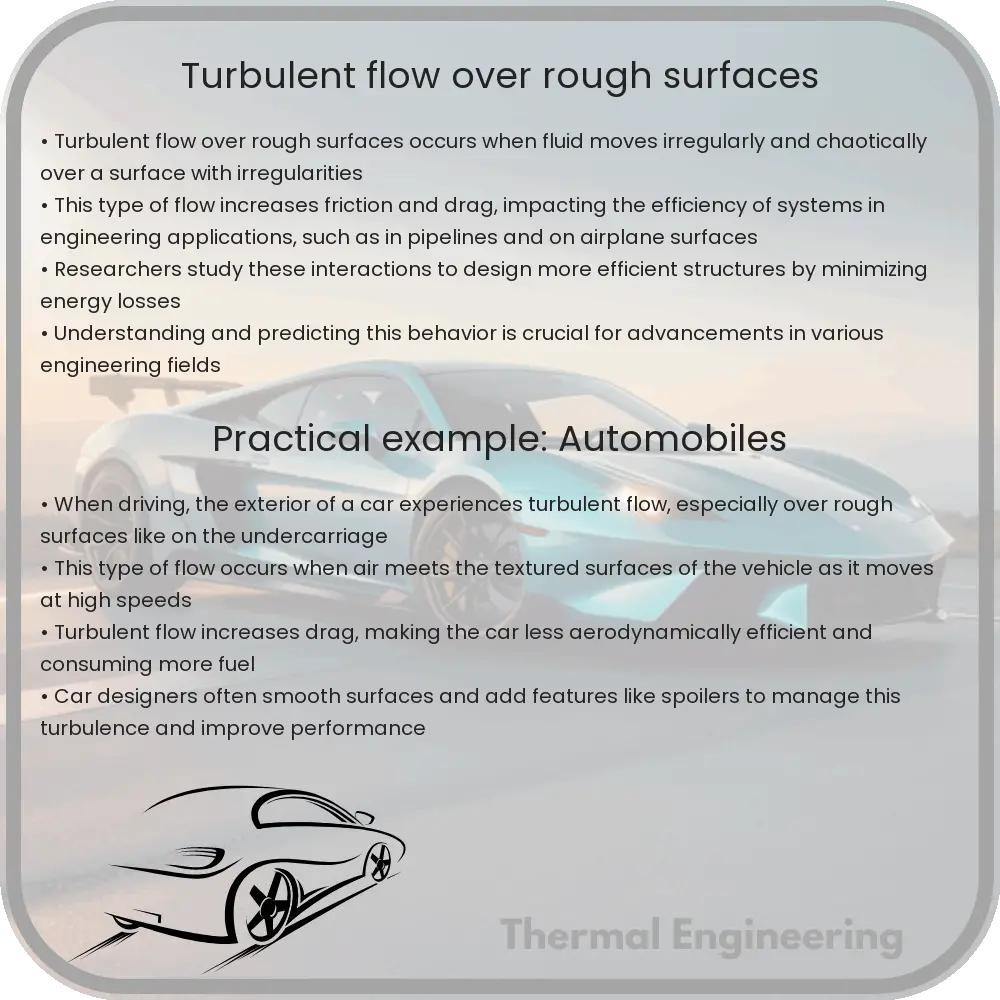Explore the dynamics of turbulent flow over rough surfaces and its critical role in fluid mechanics and engineering applications.

Understanding Turbulent Flow over Rough Surfaces
Turbulent flow over rough surfaces is a fundamental concept in fluid dynamics, which has significant implications in various engineering fields, including aerospace, civil, and environmental engineering. Turbulence is the random, chaotic movement of fluid particles, as opposed to the orderly, layered flow known as laminar flow. The complexity increases when these flows interact with rough surfaces.
What is Turbulent Flow?
Turbulent flow occurs when the kinetic energy of a fluid exceeds the damping effect of its viscosity, leading to a chaotic state where eddies, swirls, and currents appear within the flow. This kind of flow typically happens at high velocities and in fluids with low viscosity. In contrast to laminar flow, which is characterized by smooth streamlines and predictability, turbulent flow is distinguished by mixing, irregularity, and diffusion.
Impact of Roughness on Turbulence
The roughness of a surface plays a crucial role in the transition from laminar to turbulent flow. Even minor imperfections on a surface can significantly alter the behavior of fluid flow. Rough surfaces increase the friction between the fluid and the surface, which enhances turbulence. These surfaces introduce additional eddies and disturbances in the flow, increasing the complexity of the fluid dynamics.
Quantifying Turbulence and Roughness
Two key dimensionless numbers help quantify the behavior of turbulent flows over rough surfaces:
- Reynolds Number (Re): This is a ratio of inertial forces to viscous forces in a fluid, given by the equation Re = (ρ * u * L) / μ, where ρ is the density of the fluid, u is the flow velocity, L is a characteristic linear dimension (like diameter of a pipe), and μ is the dynamic viscosity of the fluid. Higher Reynolds numbers indicate more turbulent flows.
- Roughness Ratio (ks / L): This ratio represents the relative scale of the surface’s roughness (ks) compared to the flow’s characteristic length scale (L). Higher values suggest more significant impacts of roughness on the flow.
Applications and Practical Considerations
Turbulent flow over rough surfaces is not just a theoretical concern but has practical implications in various engineering systems:
- Aerospace Engineering: Understanding the interactions between air flow and the rough surfaces of an aircraft can help optimize its performance and safety features.
- Civil Engineering: The design of hydraulic structures like dams, channels, and culverts relies on knowledge of how water interacts with rough surfaces to minimize erosion and energy loss.
- Environmental Engineering: Studying turbulent flow can aid in modeling pollution dispersion in rivers and atmospheric conditions.
Conclusion
The examination of turbulent flow over rough surfaces is essential for the accurate prediction and analysis of fluid behavior in various engineering applications. Understanding these dynamics allows engineers to design more efficient and effective systems, whether it be reducing drag on an aircraft, preventing erosion in water channels, or predicting environmental pollutant dispersal. This intersection of fluid mechanics and material science continues to challenge and advance the capabilities of modern engineering.